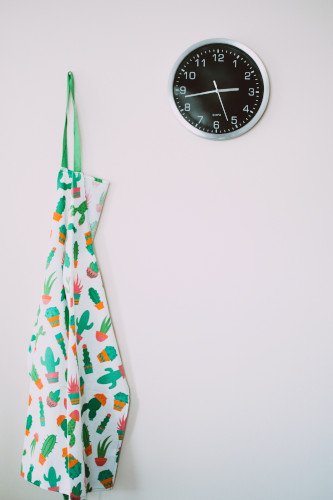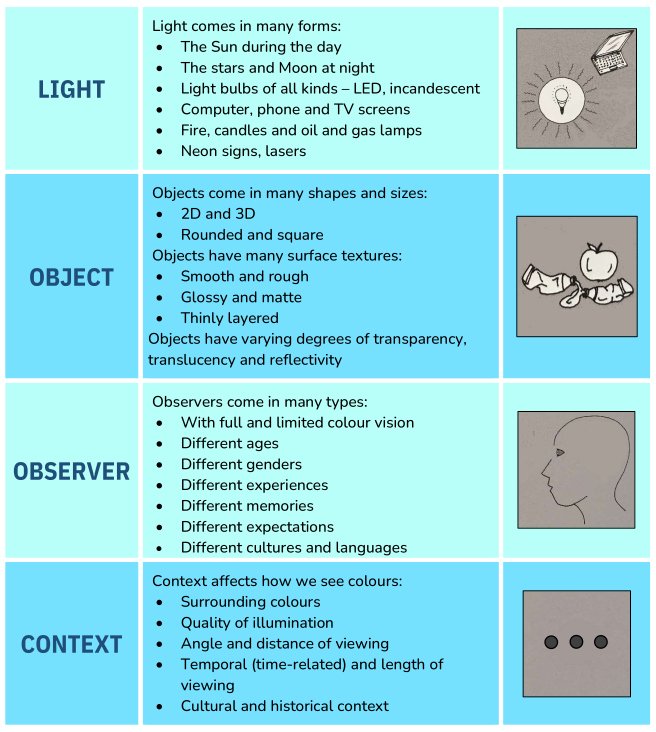Colour is a perceptual experience
Take a moment to look at your surroundings. What do you see? A colourful apron hanging on the wall. Your striped cat sleeping on the couch. Fresh vegetables on the table. All of the visual information about the shapes, sizes, colours, and motions of objects comes to us via light.
Where is colour?
Although it seems as if colour a property of the physical world, ‘out there’, colour is ultimately a perception which results when light enters our eyes and activates our whole visual system.
To understand how colour is a perceptual experience, consider chocolate cake (yum!). Chocolate cake sitting on a table has no taste (?!?). We only experience the taste of chocolate after we put some of the cake in our mouth - then we perceive the taste of the chocolate with our tastebuds. Taste, like vision, is one of our senses, and needs something to activate it. Like the cake activates our tastebuds for us to be able to taste the delicious chocolate, light activates receptors in our eyes for us to be able to see.
In the diagram on the right below, we see how the light reflected by an apple enters our eyes and activates our whole visual system (which includes our eyes, brain and all the connections between). The redness of the apple is a perception produced by our visual system.
Diagram courtesy of Andreas Schwarz.
Our visual system is dynamic, decoding and interpreting all of the light beams which enter our eyes, from every location within our visual field, every fraction of a second. This remarkable feat allows us to make sense of all the information entering our eyes. Colour plays an important role in visual perception as it helps us identify what we are seeing, distinguish boundaries between different objects, and can provide important immediate information about our environment like signalling danger.
What else influences how we see colours?
Light activating our visual system is not the whole story behind how we see colour. The complex, interwoven relationships between light, objects, observers and contexts, with all their variations, together influence and determine the colours we perceive.
Note that there are variations in the way different people perceive colours. Some have limited colour vision, and see only a fraction of colours seen by people with full colour vision. Some people with synesthesia can experience colours with other senses.













